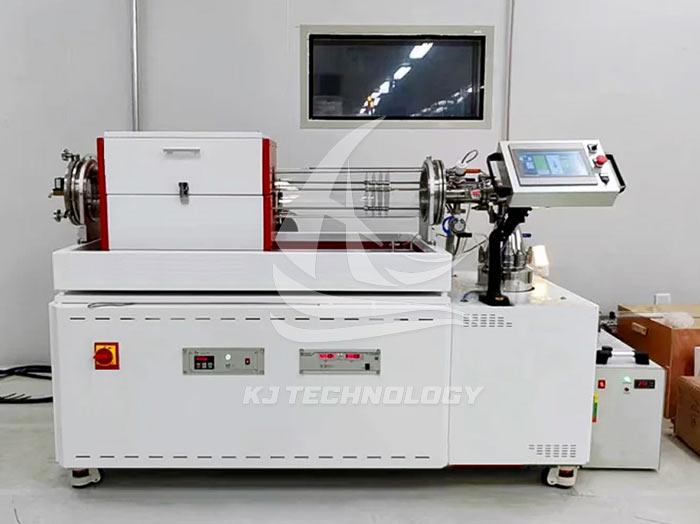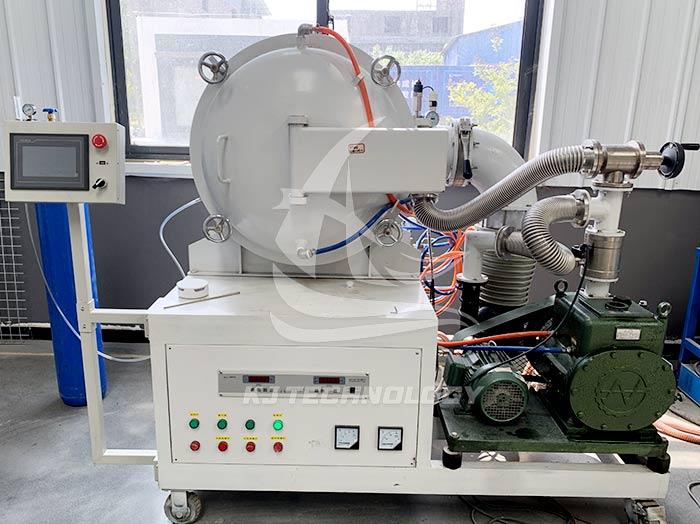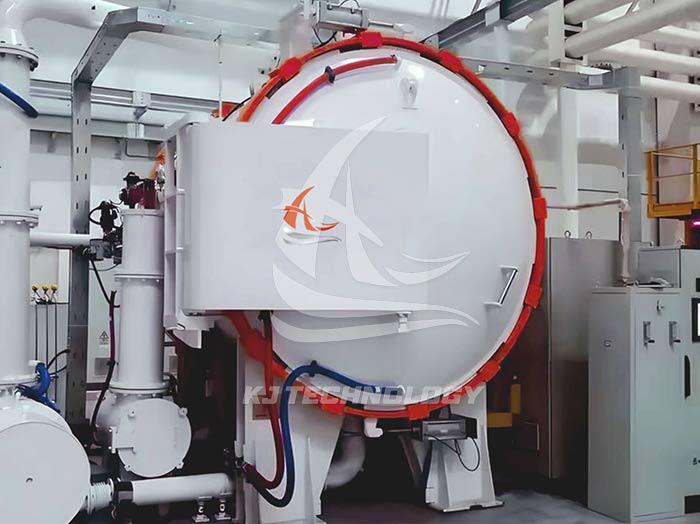Can vacuum heat treatment atmosphere electric furnaces be used in laboratories?
 06-30-2025 Author: KJ technology
06-30-2025 Author: KJ technology
Vacuum heat treatment atmosphere electric furnaces are fully suitable for laboratory environments, especially in scenarios such as material research, process development, and failure analysis, where they have irreplaceable advantages. The following analysis is conducted from four dimensions: laboratory requirement matching, core function adaptation, operational convenience, and typical application cases:
1. High matching between laboratory requirements and equipment characteristics
Small batch and multi variety experimental requirements
Laboratories typically need to process small amounts of samples (from gram to kilogram level) and frequently switch material types (such as metal, ceramic, composite materials). The chamber volume of the vacuum heat treatment atmosphere electric furnace is flexible (ranging from 1L to 100L), which can adapt to samples of different sizes and support rapid material change to avoid cross contamination.
High precision process control requirements
Laboratory research requires precise control of temperature (± 1 ℃), atmosphere composition (such as H ₂/N ₂ ratio error ≤ 0.5%), and pressure (vacuum degree ≤ 10 ⁻³ Pa) to verify the correlation between material properties and process parameters. This type of equipment is usually equipped with PID temperature control system, mass flow meter (MFC), and vacuum gauge, which can achieve closed-loop control of process parameters.
Safety and Environmental Compliance
The laboratory must strictly comply with the management regulations for hazardous chemicals (such as the use of flammable gases such as H ₂ and CH ₄). The vacuum heat treatment atmosphere electric furnace adopts explosion-proof design, gas leakage alarm device and automatic emergency stop function, and prevents harmful gas leakage through a sealed structure, meeting laboratory safety standards (such as OSHA, GB/T 33000).
2. Core functions support laboratory research
No oxidation heat treatment capability
Application scenario: Study the grain growth behavior of high-temperature alloys (such as Inconel 718) under vacuum to avoid surface defects caused by air oxidation interfering with experimental results.
Advantages: The vacuum environment (≤ 10 ⁻ ² Pa) can completely eliminate the oxide layer, directly observe the intrinsic properties of the material, and improve data repeatability by more than 30%.
Controllable atmosphere surface modification
Application scenario: Low temperature nitriding of 316L stainless steel in a N ₂/H ₂ mixed atmosphere, studying the effect of nitrogen concentration gradient on corrosion resistance.
Advantages: By accurately adjusting the gas ratio through MFC, precise control of the infiltration layer thickness (1-20 μ m) and hardness (HV 500-1200) can be achieved, shortening the process development cycle.
Gradient temperature field simulation
Application scenario: Simulate the radial temperature gradient of aircraft engine turbine blades (from root 1000 ℃ to tip 800 ℃), and study the distribution of thermal stress.
Advantages: Multi zone independent temperature control technology (such as 6-zone independent heating) can reproduce complex thermal history and provide data support for predicting material thermal fatigue life.
3. Laboratory operation convenience design
Modular structure
The furnace body, vacuum system, and atmosphere control system adopt a quick disassembly design for easy cleaning, maintenance, and upgrading. For example, replacing the heating element does not require dismantling the entire furnace body, reducing maintenance time to within 2 hours.
Intelligent software
Process programming software equipped with LabVIEW or Python interfaces, supporting multi-stage heating/holding/cooling curve settings, dynamic atmosphere adjustment, and real-time data recording. Laboratory personnel can remotely monitor the status of equipment through touch screens or upper computers.
Compact design
The laboratory space is limited, and this type of equipment usually adopts a compact vertical or horizontal structure (occupying an area of ≤ 1m ²), and integrates a water cooling system to reduce the impact of heat dissipation on the laboratory environment.
4. Typical laboratory application cases
New material development
Case: A university laboratory developed high entropy alloys (HEA) using a vacuum heat treatment atmosphere electric furnace. By annealing at 1200 ℃ in Ar atmosphere and controlling the grain size to below 5 μ m, the strength (σ -b ≥ 1.5 GPa) and plasticity (δ ≥ 15%) of the alloy are significantly improved.
Failure analysis
Case: A research institute conducted a vacuum heat treatment reproduction experiment on fractured titanium alloy aviation fasteners. After annealing at 650 ℃ in H ₂ atmosphere, it was found that the hydrogen embrittlement crack propagation rate decreased by 70%, verifying the effect of hydrogen content control on material toughness.
Surface Engineering Research
Case: A research and development center of a certain enterprise conducted plasma nitriding on mold steel in a N ₂/CH ₄ atmosphere. By adjusting the bias voltage (200-500V) and duty cycle (20-80%), the hardness gradient of the nitriding layer was controllable, and the mold life was increased by three times.








